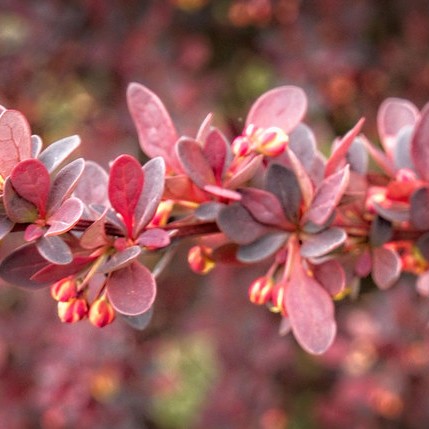
Japanese barberry
Berberis thunbergii f. atropurpurea 'Rose Glow'
Cycle:
Perennial
Watering:
Average
Hardiness Zone:
4 - 8
Flowers:
Flowers
Sun:
full sun,part shade
Fruits:
Fruits Ready In Fall
Leaf:
Yes
Growth Rate:
Low
Maintenance:
Low
Drought Tolerant:
Yes
Thorny:
Yes
Invasive:
Yes
Care Level:
Moderate
watering
Japanese barberry (Berberis thunbergii f. atropurpurea 'Rose Glow') should be watered when the top 2-3 inches of soil are dry. Depending on the weather, this could be anywhere from once a week to once every 2 weeks. Make sure not to over-water the plant, as this can lead to root rot. Generally, providing around 1 inch of water (irrigation or from rainfall) is ideal.
sunlight
Japanese barberry (Berberis thunbergii f. atropurpurea 'Rose Glow') will need a minimum of 6 hours of full sunlight each day in order to thrive. The best time of day to receive this sunlight is on clear days when the sun is at its peak intensity. Additionally, Japanese barberry will benefit greatly from dappled shade in the hottest, brightest parts of the day.
pruning
Japanese barberry plants should be pruned in late winter or early spring, when the plants are still in their dormancy. Prune all stems at their base, removing any dead, damaged, or diseased branches. If the plant is becoming too tall and dense, it can be pruned more severely to reduce its size. Though Japanese barberry is relatively low maintenance, it will require at least a light pruning each year in order to maintain its desired shape.
